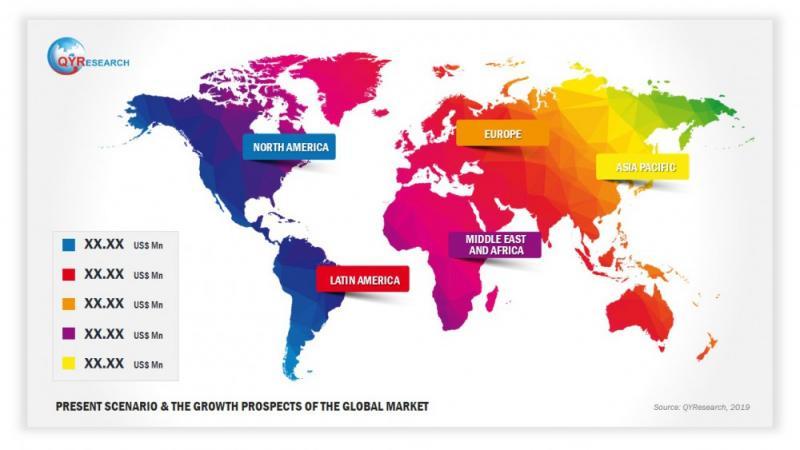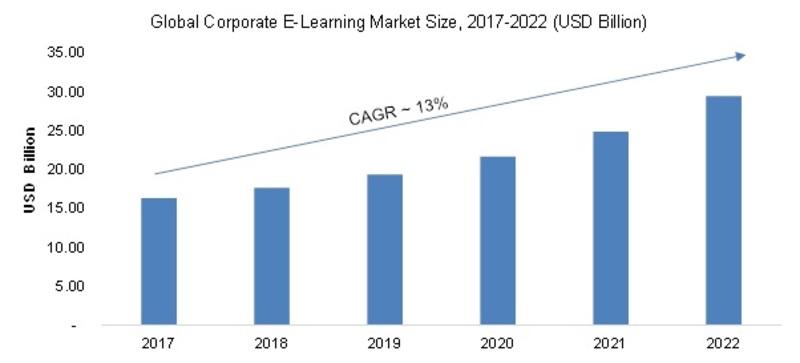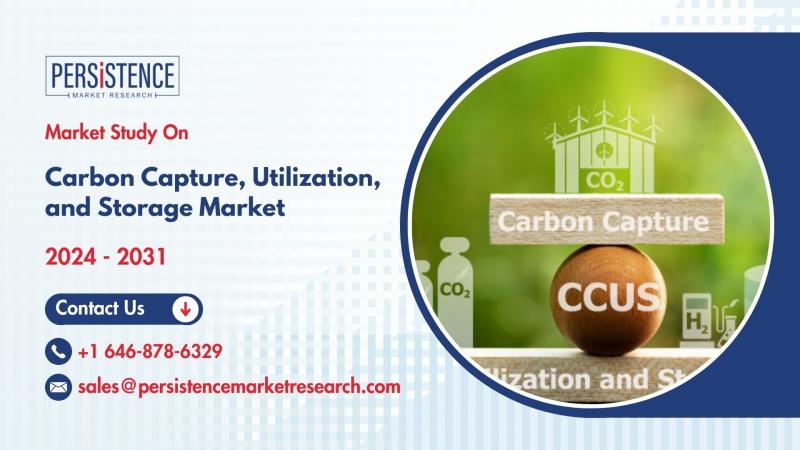Press release
Carbon Capture, Utilization, and Storage (CCUS) Market to Achieve US$7.5 Billion by 2031 | Persistence Market Research
Introduction
The global Carbon Capture, Utilization, and Storage (CCUS) market plays a crucial role in mitigating climate change by capturing carbon dioxide (CO2) emissions from industrial processes and preventing them from entering the atmosphere. As governments and businesses around the world seek solutions to reduce their carbon footprints and comply with increasingly stringent environmental regulations, the demand for CCUS technologies is expected to grow significantly.
This report explores the key drivers and challenges shaping the CCUS market, the latest technological innovations, market segmentation, and regional trends. It also offers projections and insights into the future of this rapidly evolving industry.
According to Persistence Market Research, the global CCUS market is forecast to expand at a robust compound annual growth rate (CAGR) of 13.5%. The market, valued at USD 3.1 billion in 2024, is projected to reach USD 7.5 billion by 2031, reflecting the increasing importance of CCUS technologies in combating global warming and facilitating the transition to net-zero emissions.
Get a Sample PDF Brochure of the Report (Use Corporate Email ID for a Quick Response): www.persistencemarketresearch.com/samples/33677
Market Projections and Forecast
The carbon capture, utilization, and storage market is expected to grow from USD 3.1 billion in 2024 to USD 7.5 billion by the end of 2031, with a CAGR of 13.5%. The market is being driven by increasing efforts to combat climate change, advancements in carbon capture technologies, and the expansion of regulatory frameworks that encourage carbon reduction strategies.
Governments around the world are setting ambitious carbon reduction targets, and industries such as oil and gas, power generation, and cement manufacturing are under increasing pressure to reduce their CO2 emissions. The implementation of CCUS technologies is viewed as a critical component in achieving global emission reduction goals, making it a key focus area for environmental policy and industrial strategies.
Market Dynamics
Drivers of Market Growth
Rising Environmental Regulations and Policies
Governments globally are introducing stricter environmental regulations to curb greenhouse gas emissions and meet international climate agreements such as the Paris Agreement. Policies encouraging carbon reduction and the adoption of cleaner technologies are pushing industries to adopt CCUS as part of their sustainability strategies. Carbon pricing mechanisms, including carbon taxes and emission trading schemes, are further incentivizing businesses to invest in CCUS solutions.
Advancements in Carbon Capture Technology
Technological innovation plays a crucial role in advancing the efficiency and cost-effectiveness of carbon capture, utilization, and storage systems. Advances in direct air capture (DAC), post-combustion capture, and carbon sequestration techniques are improving the scalability and performance of CCUS systems. The development of more efficient and affordable CO2 capture methods has significantly reduced operational costs, making CCUS solutions more commercially viable.
Industrial Demand for Emissions Reduction
Major carbon-emitting industries such as oil and gas, cement, steel, and power generation are increasingly adopting CCUS technologies to reduce their environmental impact and comply with government mandates. As industrial operations often generate large quantities of CO2, the need for carbon capture and storage systems is expected to remain high. Additionally, industries are looking at carbon utilization options, such as CO2-based products and chemicals, as an opportunity to generate additional revenue.
Private Sector Investment and Partnerships
The CCUS market has attracted significant investment from both public and private sectors. Partnerships between government bodies, energy companies, and technology providers are accelerating the development and deployment of CCUS infrastructure. These collaborations help fund research and development initiatives, establish commercial-scale CCUS projects, and streamline implementation processes.
Challenges in the Market
High Capital and Operational Costs
One of the primary challenges for the widespread adoption of CCUS technologies is the high initial capital expenditure required to develop and implement carbon capture systems. In addition, ongoing operational and maintenance costs, including energy consumption, transportation of captured CO2, and storage site management, present a financial barrier to some businesses, especially small and medium-sized enterprises.
Limited Infrastructure for CO2 Transport and Storage
For CCUS technologies to reach their full potential, robust infrastructure for the transport and storage of CO2 is required. However, the current infrastructure for CO2 pipelines and storage sites is limited, and expanding this infrastructure requires significant investment. The need for safe, reliable, and scalable CO2 storage solutions remains a critical challenge.
Public Perception and Social License
While the benefits of CCUS technologies are widely recognized, public acceptance of CO2 storage, especially underground storage, remains an issue. Local communities may be concerned about the potential risks associated with long-term CO2 storage, such as leaks or environmental damage. Building public trust and obtaining a social license to operate are essential for the successful implementation of CCUS projects.
Market Trends and Technological Innovations
Emerging Carbon Utilization Technologies
While carbon capture and storage are critical components of CCUS, the utilization of captured CO2 is becoming an increasingly important focus. Carbon utilization technologies convert CO2 into valuable products, such as chemicals, synthetic fuels, building materials, and plastics. Innovations in CO2-to-chemical conversion processes, including the development of catalysts and reactors, are making these technologies more efficient and commercially viable.
Direct Air Capture (DAC)
Direct air capture (DAC) is an emerging technology that captures CO2 directly from the atmosphere. As DAC technologies continue to evolve, they hold the potential to remove CO2 from the environment and reduce atmospheric carbon concentrations. Though DAC systems are currently more expensive than traditional capture methods, ongoing research is expected to reduce costs and improve their scalability.
Carbon Capture and Storage in Hard-to-Abate Sectors
Certain industries, such as cement, steel, and chemicals, are particularly challenging when it comes to reducing emissions due to their inherent CO2 output. CCUS technologies are being targeted for these "hard-to-abate" sectors, where traditional emissions reduction measures, such as electrification, are not as feasible. The development of industry-specific CCUS solutions is expected to drive significant market growth in these sectors.
Digitalization and AI in CCUS Operations
Advances in digitalization, automation, and artificial intelligence (AI) are transforming CCUS operations. AI and machine learning are being utilized to optimize the performance of carbon capture facilities, predict equipment failure, and improve monitoring and verification systems. These technologies enhance operational efficiency and help reduce the overall costs of CCUS projects.
Market Segmentation
By Technology Type
Post-Combustion Capture
The most widely used form of carbon capture, post-combustion capture involves capturing CO2 emissions after the combustion process. It is commonly applied in power plants, cement production, and other industrial facilities.
Pre-Combustion Capture
Pre-combustion capture involves capturing CO2 before combustion takes place, typically in gasification-based processes. This technology is often used in hydrogen production and gasification plants.
Oxy-Fuel Combustion
Oxy-fuel combustion captures CO2 by using oxygen instead of air in combustion processes. This technique is gaining attention due to its higher efficiency in CO2 capture.
Direct Air Capture (DAC)
DAC technology removes CO2 directly from the atmosphere, offering the potential for carbon removal at a global scale. Although still in the early stages, DAC technologies are gaining investment due to their long-term promise in addressing climate change.
By Application
Oil and Gas
The oil and gas industry is one of the largest contributors to CO2 emissions and is a significant adopter of CCUS technologies. CO2 captured from the oil and gas sector can be stored in deep geological formations or utilized for enhanced oil recovery (EOR).
Power Generation
Coal and natural gas-fired power plants are major sources of CO2 emissions. CCUS technologies can capture the CO2 produced in power generation processes, helping to reduce emissions from the energy sector.
Cement and Steel Industries
Both cement and steel industries are high-emitting sectors. The application of CCUS in these industries is critical to achieving carbon neutrality in industrial manufacturing.
By Region
North America
North America is expected to dominate the global CCUS market due to a combination of strong regulatory support, technological advancements, and significant investments in research and development. The U.S. and Canada are home to many large-scale CCUS projects.
Europe
Europe has implemented progressive policies to reduce emissions and increase CCUS deployment. The European Union has set ambitious carbon reduction targets, which are expected to drive demand for CCUS technologies.
Asia-Pacific
Asia-Pacific is projected to experience significant growth in the CCUS market, driven by industrial demand in countries like China and India, where emissions from manufacturing and energy production are high.
Key Companies in the Market
Shell Global
ExxonMobil Corporation
Carbon Clean Solutions
Aker Solutions
Linde Group
Chevron Corporation
TotalEnergies
Equinor
Honeywell UOP
BASF SE
Future Outlook
The global carbon capture, utilization, and storage market is positioned for significant growth, with a projected CAGR of 13.5% from 2024 to 2031. Advancements in technology, regulatory frameworks, and private sector investments will drive market expansion. Despite challenges such as high costs and infrastructure limitations, the global push for carbon neutrality and emissions reduction targets is set to propel the adoption of CCUS solutions.
As industries across the globe seek to reduce their carbon footprints, CCUS will become a vital part of the climate change mitigation strategy, helping to achieve global net-zero goals and enabling the continued use of fossil fuels in a more sustainable manner.
Conclusion
The CCUS market is a rapidly evolving industry at the forefront of the fight against climate change. As technology improves and regulatory pressures increase, the market is poised for robust growth. With a projected market value of USD 7.5 billion by 2031, CCUS technologies will play a crucial role in reducing emissions from hard-to-abate sectors and enabling a sustainable future. Continued investment in R&D, infrastructure, and public-private partnerships will be essential in overcoming current challenges and realizing the full potential of CCUS in achieving global climate goals.
Explore the Latest Trending "Exclusive Article" @
• https://prnewssync.medium.com/automotive-roof-rack-market-analysis-for-industry-professionals-3729912c4613
• https://apsnewsmedia.wordpress.com/2025/01/15/automotive-roof-rack-market-innovations-driving-demand/
• https://apsnewsmedia.blogspot.com/2025/01/automotive-roof-rack-market-future.html
• https://www.manchesterprofessionals.co.uk/article/marketing-pr/80120/automotive-roof-rack-market-overview-of-emerging-opportunities
• https://vocal.media/stories/automotive-roof-rack-market-top-players-and-competitor-analysis
Contact Us:
Persistence Market Research
G04 Golden Mile House, Clayponds Lane
Brentford, London, TW8 0GU UK
USA Phone: +1 646-878-6329
UK Phone: +44 203-837-5656
Email: sales@persistencemarketresearch.com
Web: https://www.persistencemarketresearch.com
About Persistence Market Research:
At Persistence Market Research, we specialize in creating research studies that serve as strategic tools for driving business growth. Established as a proprietary firm in 2012, we have evolved into a registered company in England and Wales in 2023 under the name Persistence Research & Consultancy Services Ltd. With a solid foundation, we have completed over 3600 custom and syndicate market research projects, and delivered more than 2700 projects for other leading market research companies' clients.
Our approach combines traditional market research methods with modern tools to offer comprehensive research solutions. With a decade of experience, we pride ourselves on deriving actionable insights from data to help businesses stay ahead of the competition. Our client base spans multinational corporations, leading consulting firms, investment funds, and government departments. A significant portion of our sales comes from repeat clients, a testament to the value and trust we've built over the years.
The global Carbon Capture, Utilization, and Storage (CCUS) market plays a crucial role in mitigating climate change by capturing carbon dioxide (CO2) emissions from industrial processes and preventing them from entering the atmosphere. As governments and businesses around the world seek solutions to reduce their carbon footprints and comply with increasingly stringent environmental regulations, the demand for CCUS technologies is expected to grow significantly.
This report explores the key drivers and challenges shaping the CCUS market, the latest technological innovations, market segmentation, and regional trends. It also offers projections and insights into the future of this rapidly evolving industry.
According to Persistence Market Research, the global CCUS market is forecast to expand at a robust compound annual growth rate (CAGR) of 13.5%. The market, valued at USD 3.1 billion in 2024, is projected to reach USD 7.5 billion by 2031, reflecting the increasing importance of CCUS technologies in combating global warming and facilitating the transition to net-zero emissions.
Get a Sample PDF Brochure of the Report (Use Corporate Email ID for a Quick Response): www.persistencemarketresearch.com/samples/33677
Market Projections and Forecast
The carbon capture, utilization, and storage market is expected to grow from USD 3.1 billion in 2024 to USD 7.5 billion by the end of 2031, with a CAGR of 13.5%. The market is being driven by increasing efforts to combat climate change, advancements in carbon capture technologies, and the expansion of regulatory frameworks that encourage carbon reduction strategies.
Governments around the world are setting ambitious carbon reduction targets, and industries such as oil and gas, power generation, and cement manufacturing are under increasing pressure to reduce their CO2 emissions. The implementation of CCUS technologies is viewed as a critical component in achieving global emission reduction goals, making it a key focus area for environmental policy and industrial strategies.
Market Dynamics
Drivers of Market Growth
Rising Environmental Regulations and Policies
Governments globally are introducing stricter environmental regulations to curb greenhouse gas emissions and meet international climate agreements such as the Paris Agreement. Policies encouraging carbon reduction and the adoption of cleaner technologies are pushing industries to adopt CCUS as part of their sustainability strategies. Carbon pricing mechanisms, including carbon taxes and emission trading schemes, are further incentivizing businesses to invest in CCUS solutions.
Advancements in Carbon Capture Technology
Technological innovation plays a crucial role in advancing the efficiency and cost-effectiveness of carbon capture, utilization, and storage systems. Advances in direct air capture (DAC), post-combustion capture, and carbon sequestration techniques are improving the scalability and performance of CCUS systems. The development of more efficient and affordable CO2 capture methods has significantly reduced operational costs, making CCUS solutions more commercially viable.
Industrial Demand for Emissions Reduction
Major carbon-emitting industries such as oil and gas, cement, steel, and power generation are increasingly adopting CCUS technologies to reduce their environmental impact and comply with government mandates. As industrial operations often generate large quantities of CO2, the need for carbon capture and storage systems is expected to remain high. Additionally, industries are looking at carbon utilization options, such as CO2-based products and chemicals, as an opportunity to generate additional revenue.
Private Sector Investment and Partnerships
The CCUS market has attracted significant investment from both public and private sectors. Partnerships between government bodies, energy companies, and technology providers are accelerating the development and deployment of CCUS infrastructure. These collaborations help fund research and development initiatives, establish commercial-scale CCUS projects, and streamline implementation processes.
Challenges in the Market
High Capital and Operational Costs
One of the primary challenges for the widespread adoption of CCUS technologies is the high initial capital expenditure required to develop and implement carbon capture systems. In addition, ongoing operational and maintenance costs, including energy consumption, transportation of captured CO2, and storage site management, present a financial barrier to some businesses, especially small and medium-sized enterprises.
Limited Infrastructure for CO2 Transport and Storage
For CCUS technologies to reach their full potential, robust infrastructure for the transport and storage of CO2 is required. However, the current infrastructure for CO2 pipelines and storage sites is limited, and expanding this infrastructure requires significant investment. The need for safe, reliable, and scalable CO2 storage solutions remains a critical challenge.
Public Perception and Social License
While the benefits of CCUS technologies are widely recognized, public acceptance of CO2 storage, especially underground storage, remains an issue. Local communities may be concerned about the potential risks associated with long-term CO2 storage, such as leaks or environmental damage. Building public trust and obtaining a social license to operate are essential for the successful implementation of CCUS projects.
Market Trends and Technological Innovations
Emerging Carbon Utilization Technologies
While carbon capture and storage are critical components of CCUS, the utilization of captured CO2 is becoming an increasingly important focus. Carbon utilization technologies convert CO2 into valuable products, such as chemicals, synthetic fuels, building materials, and plastics. Innovations in CO2-to-chemical conversion processes, including the development of catalysts and reactors, are making these technologies more efficient and commercially viable.
Direct Air Capture (DAC)
Direct air capture (DAC) is an emerging technology that captures CO2 directly from the atmosphere. As DAC technologies continue to evolve, they hold the potential to remove CO2 from the environment and reduce atmospheric carbon concentrations. Though DAC systems are currently more expensive than traditional capture methods, ongoing research is expected to reduce costs and improve their scalability.
Carbon Capture and Storage in Hard-to-Abate Sectors
Certain industries, such as cement, steel, and chemicals, are particularly challenging when it comes to reducing emissions due to their inherent CO2 output. CCUS technologies are being targeted for these "hard-to-abate" sectors, where traditional emissions reduction measures, such as electrification, are not as feasible. The development of industry-specific CCUS solutions is expected to drive significant market growth in these sectors.
Digitalization and AI in CCUS Operations
Advances in digitalization, automation, and artificial intelligence (AI) are transforming CCUS operations. AI and machine learning are being utilized to optimize the performance of carbon capture facilities, predict equipment failure, and improve monitoring and verification systems. These technologies enhance operational efficiency and help reduce the overall costs of CCUS projects.
Market Segmentation
By Technology Type
Post-Combustion Capture
The most widely used form of carbon capture, post-combustion capture involves capturing CO2 emissions after the combustion process. It is commonly applied in power plants, cement production, and other industrial facilities.
Pre-Combustion Capture
Pre-combustion capture involves capturing CO2 before combustion takes place, typically in gasification-based processes. This technology is often used in hydrogen production and gasification plants.
Oxy-Fuel Combustion
Oxy-fuel combustion captures CO2 by using oxygen instead of air in combustion processes. This technique is gaining attention due to its higher efficiency in CO2 capture.
Direct Air Capture (DAC)
DAC technology removes CO2 directly from the atmosphere, offering the potential for carbon removal at a global scale. Although still in the early stages, DAC technologies are gaining investment due to their long-term promise in addressing climate change.
By Application
Oil and Gas
The oil and gas industry is one of the largest contributors to CO2 emissions and is a significant adopter of CCUS technologies. CO2 captured from the oil and gas sector can be stored in deep geological formations or utilized for enhanced oil recovery (EOR).
Power Generation
Coal and natural gas-fired power plants are major sources of CO2 emissions. CCUS technologies can capture the CO2 produced in power generation processes, helping to reduce emissions from the energy sector.
Cement and Steel Industries
Both cement and steel industries are high-emitting sectors. The application of CCUS in these industries is critical to achieving carbon neutrality in industrial manufacturing.
By Region
North America
North America is expected to dominate the global CCUS market due to a combination of strong regulatory support, technological advancements, and significant investments in research and development. The U.S. and Canada are home to many large-scale CCUS projects.
Europe
Europe has implemented progressive policies to reduce emissions and increase CCUS deployment. The European Union has set ambitious carbon reduction targets, which are expected to drive demand for CCUS technologies.
Asia-Pacific
Asia-Pacific is projected to experience significant growth in the CCUS market, driven by industrial demand in countries like China and India, where emissions from manufacturing and energy production are high.
Key Companies in the Market
Shell Global
ExxonMobil Corporation
Carbon Clean Solutions
Aker Solutions
Linde Group
Chevron Corporation
TotalEnergies
Equinor
Honeywell UOP
BASF SE
Future Outlook
The global carbon capture, utilization, and storage market is positioned for significant growth, with a projected CAGR of 13.5% from 2024 to 2031. Advancements in technology, regulatory frameworks, and private sector investments will drive market expansion. Despite challenges such as high costs and infrastructure limitations, the global push for carbon neutrality and emissions reduction targets is set to propel the adoption of CCUS solutions.
As industries across the globe seek to reduce their carbon footprints, CCUS will become a vital part of the climate change mitigation strategy, helping to achieve global net-zero goals and enabling the continued use of fossil fuels in a more sustainable manner.
Conclusion
The CCUS market is a rapidly evolving industry at the forefront of the fight against climate change. As technology improves and regulatory pressures increase, the market is poised for robust growth. With a projected market value of USD 7.5 billion by 2031, CCUS technologies will play a crucial role in reducing emissions from hard-to-abate sectors and enabling a sustainable future. Continued investment in R&D, infrastructure, and public-private partnerships will be essential in overcoming current challenges and realizing the full potential of CCUS in achieving global climate goals.
Explore the Latest Trending "Exclusive Article" @
• https://prnewssync.medium.com/automotive-roof-rack-market-analysis-for-industry-professionals-3729912c4613
• https://apsnewsmedia.wordpress.com/2025/01/15/automotive-roof-rack-market-innovations-driving-demand/
• https://apsnewsmedia.blogspot.com/2025/01/automotive-roof-rack-market-future.html
• https://www.manchesterprofessionals.co.uk/article/marketing-pr/80120/automotive-roof-rack-market-overview-of-emerging-opportunities
• https://vocal.media/stories/automotive-roof-rack-market-top-players-and-competitor-analysis
Contact Us:
Persistence Market Research
G04 Golden Mile House, Clayponds Lane
Brentford, London, TW8 0GU UK
USA Phone: +1 646-878-6329
UK Phone: +44 203-837-5656
Email: sales@persistencemarketresearch.com
Web: https://www.persistencemarketresearch.com
About Persistence Market Research:
At Persistence Market Research, we specialize in creating research studies that serve as strategic tools for driving business growth. Established as a proprietary firm in 2012, we have evolved into a registered company in England and Wales in 2023 under the name Persistence Research & Consultancy Services Ltd. With a solid foundation, we have completed over 3600 custom and syndicate market research projects, and delivered more than 2700 projects for other leading market research companies' clients.
Our approach combines traditional market research methods with modern tools to offer comprehensive research solutions. With a decade of experience, we pride ourselves on deriving actionable insights from data to help businesses stay ahead of the competition. Our client base spans multinational corporations, leading consulting firms, investment funds, and government departments. A significant portion of our sales comes from repeat clients, a testament to the value and trust we've built over the years.
Permanent link to this press release:
Copy
Please set a link in the press area of your homepage
to this press release on woodPRI. woodPRI disclaims liability for any content contained in
this release.
Recommend

/newsMicroencapsulation Market Deep Analysis on Key Players - Dow Corning, Encapsys, Syngenta Crop Protection, Evonik Industries, 3M and Bayer
Market Study Report Adds Global Microencapsulation Market Size, Status and Forecast 2024 added to its database. The report provides key statistics on the current state of the industry and other analytical data to understand the market.
Extensive research is required for choosing the appropriate cor...

/newsGermany Airbag Market Size 2023: Global Share, Industry And Report Analysis By 2030 | Hyundai Mobis Co., Ltd. Key Safety Systems, Inc. Robert Bosch GmbH
Germany airbag market is expected to grow at a CAGR of around 6% during the forecast period. Germany Airbag Market research report refers to gathering and analyzing significant market data serve as best medium for various industry players to launch novel product or service. It is vital for key firms...

/newsSecurities Brokerages And Stock Exchanges Market Outlook 2021: Big Things are Happening
A new intelligence report released by HTF MI with title "Global Securities Brokerages And Stock Exchanges Market Survey & Outlook" is designed covering micro level of analysis by Insurers and key business segments, offerings and sales channels. The Global Securities Brokerages And Stock Exchange...

/newsRenewable Chemicals Market Emerging Trends and Competitive Landscape Forecast to 2028
The renewable chemicals market was valued at US$ 80,566.30 million in 2021 and is projected to reach US$ 1,76,750.76 million by 2028 it is expected to grow at a CAGR of 11.9% from 2021 to 2028. The research report focuses on the current market trends, opportunities, future potential of the market, a...

/newsHow Coronavirus is Impacting Cold Brew Coffee, Global Market Volume Analysis, Size, Share and Key Trends 2020-2026
"Market Latest Research Report 2020:
Los Angles United States, February 2020: The Cold Brew Coffee market has been garnering remarkable momentum in the recent years. The steadily escalating demand due to improving purchasing power is projected to bode well for the global market. QY Research's lates...

/newsCorporate E-Learning Market - Global Industry Size, Share, Key Players Analysis that are Infor, SkillSoft Corporation, Adrenna, CERTPOINT Systems and others with Regional Forecast to 2022
Overview:
E-Learning is used to enhance the learning procedures for newer job requirements and to make employees sound about the internal and external changes in the market and respective organizations. This method has created considerable differences in the ways of training and developing employee...
